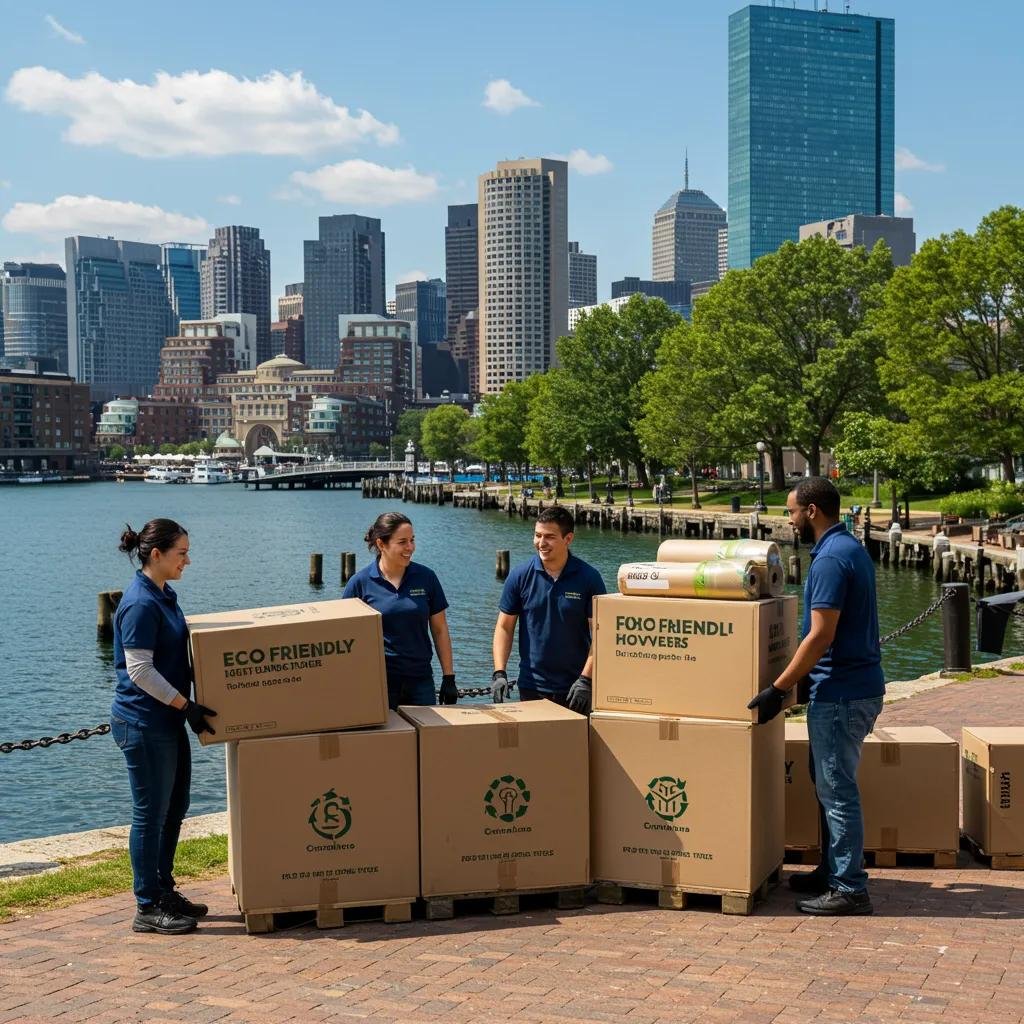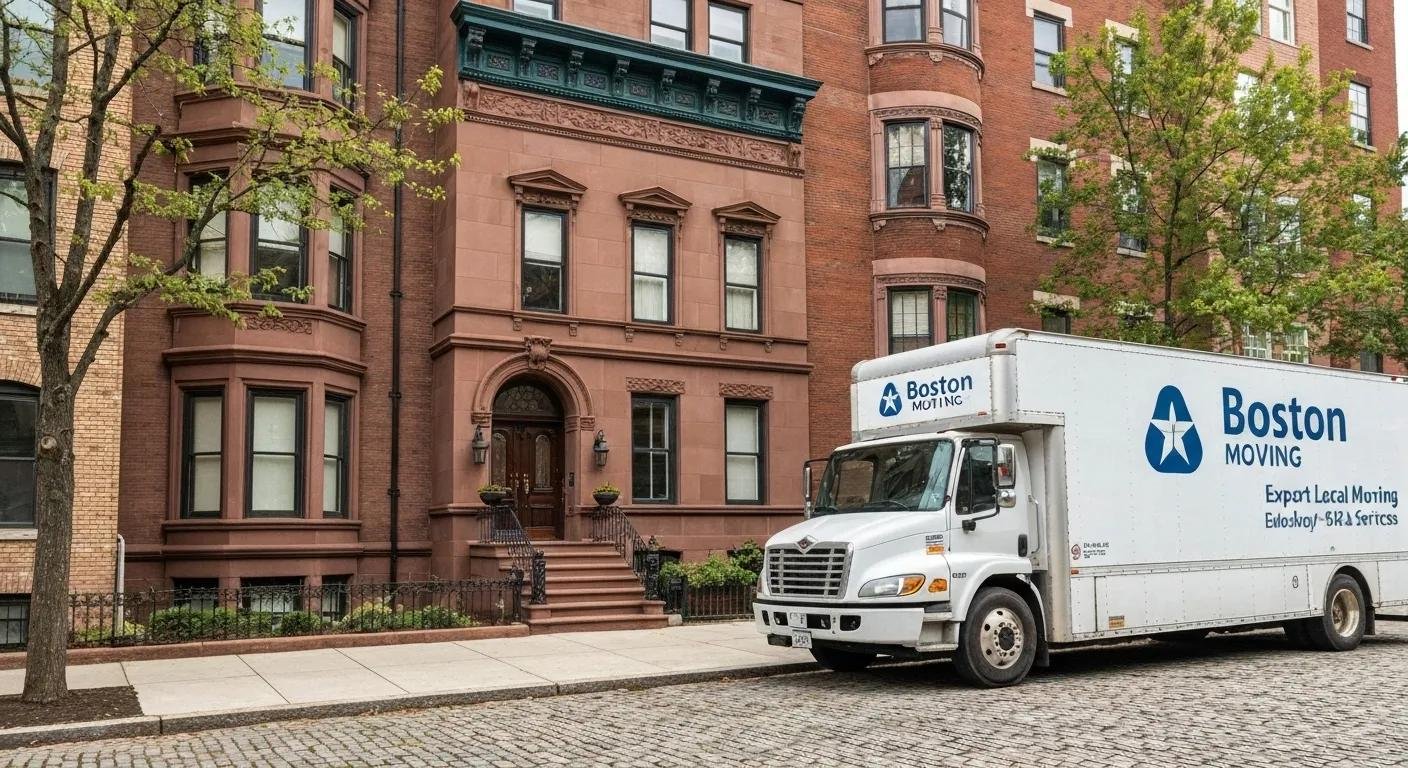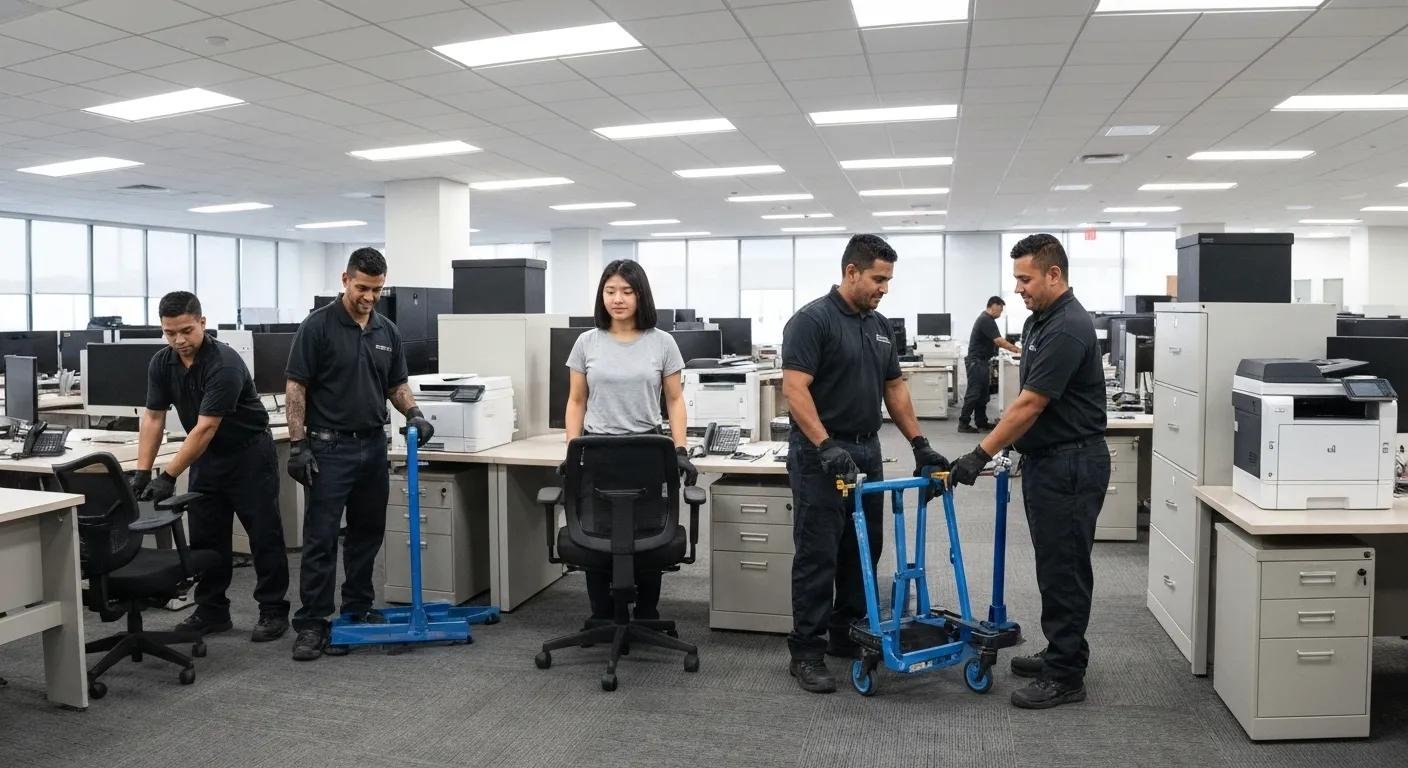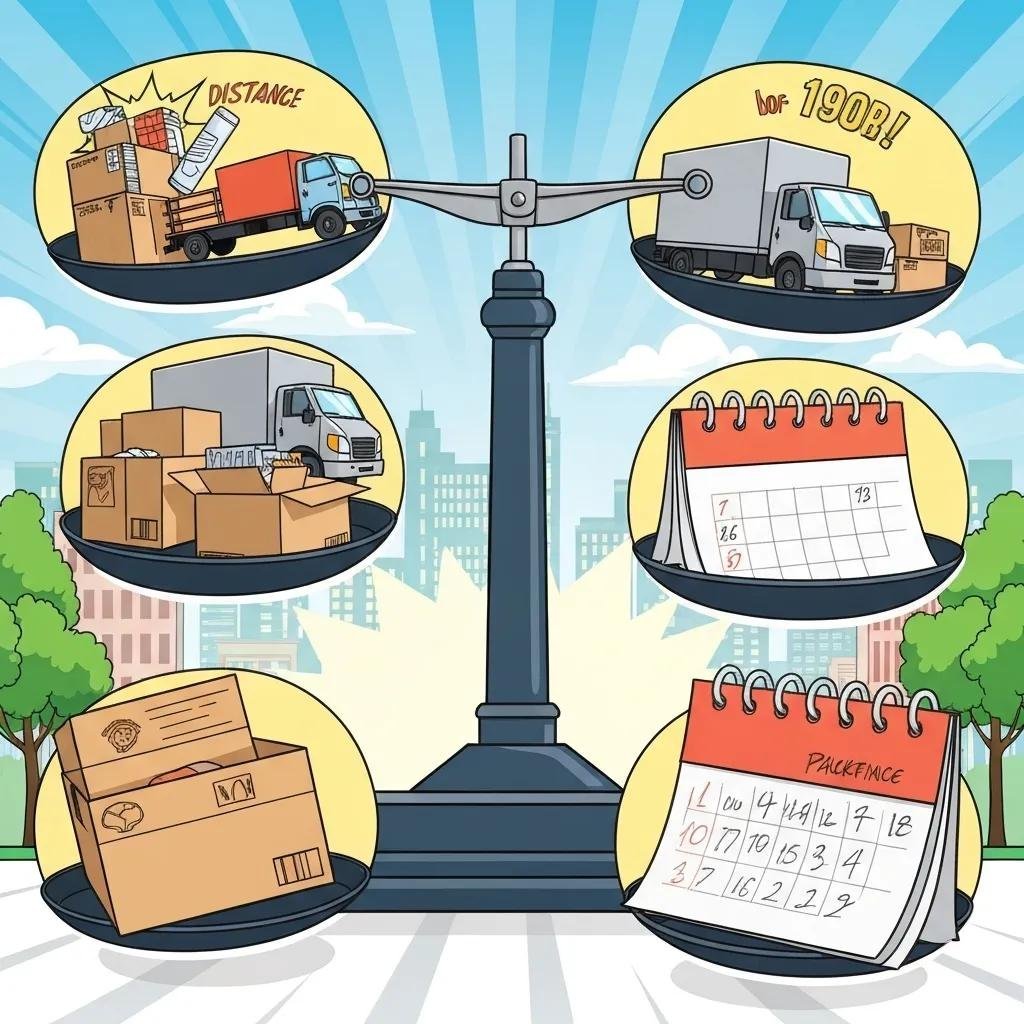Boston’s Green Movers: Sustainable Local Relocation Services That Cherish Our Planet
Every year, Boston households contribute tons of waste to landfills. However, by choosing eco-friendly local moving services, we can slash landfill contributions by as much as 60 percent. This guide reveals how Boston residents and businesses can embrace sustainable moving practices to lighten their environmental footprint, explore earth-kind packing solutions, cut down on emissions, manage waste responsibly, and select Horizon Boston Movers for a truly greener relocation. You’ll find clear explanations, practical advice on reusable containers and smart routing, and straightforward steps to get a quote for your sustainable move.
What Exactly Are Eco-Friendly Moving Services, and Why Are They Crucial for Boston?
Eco-friendly moving services weave sustainability into every step of your relocation. They focus on reusing materials, cutting down on emissions, and diverting waste to protect our precious urban environments. In Boston’s bustling neighborhoods, where traffic congestion and limited waste facilities already strain our planet, green moving practices help restore balance by reducing carbon output and minimizing single-use packaging. For instance, swapping out dozens of cardboard boxes for durable, reusable plastic crates in a single household move significantly reduces deforestation and disposal burdens. Understanding these fundamental principles is key to exploring specific green methods and choosing the right partners.
How Do Green Moving Practices Make a Difference for the Environment?
Green moving reduces environmental impact by replacing disposable supplies with circular-economy alternatives, optimizing transportation routes, and directing unwanted items to donation centers or recycling facilities instead of landfills. By using reusable packing containers and biodegradable wraps, movers eliminate the need for single-use items that contribute to landfill methane production. Sophisticated route planning software shortens travel distances, conserving fuel and lowering harmful emissions in Boston’s busy streets. Together, these strategies can cut waste volume in half and contribute to cleaner air, directly benefiting our community’s health and sustainability goals.
What Qualities Define an Environmentally Responsible Moving Company?
An environmentally responsible moving company integrates sustainability into its core operations through the use of renewable materials, low-emission vehicles, and strategic waste partnerships. Key indicators include a robust reusable crate rental program with thorough sanitization between uses, a commitment to sourcing recycled and compostable packing supplies, and active collaborations with local charities to rehome furniture and electronics. Companies that meticulously track fuel consumption, offset their carbon emissions, and obtain certifications from recognized environmental organizations demonstrate a strong commitment to transparency and accountability. These practices bolster Boston’s resilience by aligning moving logistics with vital ecological priorities.
What Sustainable Packing Solutions Do Boston’s Green Movers Provide?
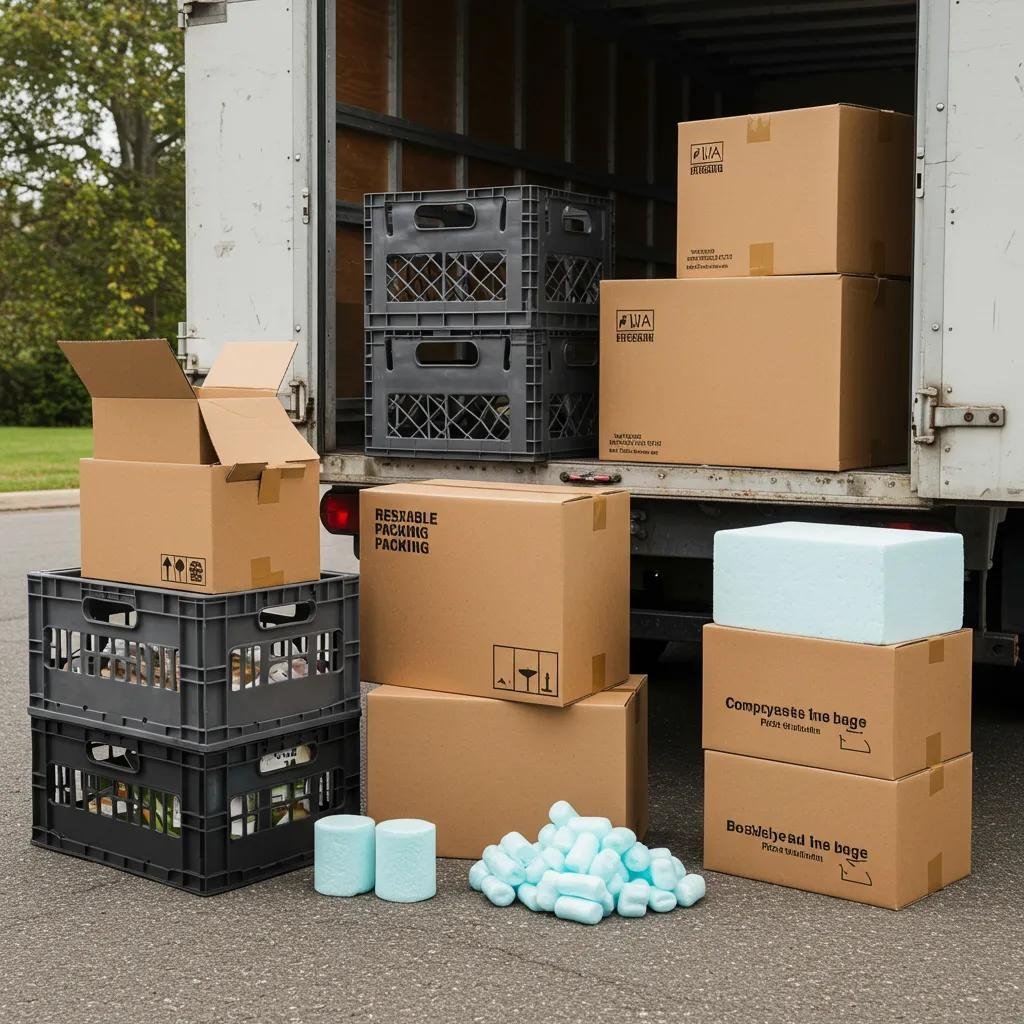
Boston’s leading green movers offer a comprehensive range of sustainable packing solutions designed to minimize waste and simplify your relocation. Their typical offerings include reusable packing crates, which are conveniently delivered before your move and collected afterward, along with fully recyclable boxes crafted from post-consumer paper. You’ll also find compostable packing peanuts or bubble wrap made from plant-based starches. These solutions are rooted in circular economy principles, leading to reduced costs and less material consumption.
- Reusable crates are delivered before your move, professionally cleaned after collection, and can replace up to 50 cardboard boxes per move.
- Compostable packing peanuts break down naturally within weeks, preventing persistent plastic waste from entering our municipal systems.
- Boxes made from recycled paper offer durability comparable to virgin-fiber cartons while actively supporting the paper recycling industry.
These eco-conscious packing options not only reduce landfill contributions and lower overall moving expenses but also pave the way for a truly green relocation experience.
How Do Reusable Moving Crates Help Cut Down on Waste?
Reusable moving crates significantly reduce the need for single-use cardboard by providing sturdy plastic containers that stack efficiently in moving vans. Each crate effectively replaces an average of three cardboard boxes and requires only simple, water-based cleaning between uses, minimizing the demand for new raw materials. Clients benefit from lower disposal fees, and moving crews can handle these uniform containers more safely, reducing the risk of damage to fragile items. This streamlined system shrinks the waste stream and promotes a more efficient moving process throughout Boston’s diverse neighborhoods.
What Kinds of Recycled and Biodegradable Packing Materials Are Used?
Moving professionals in Boston utilize recycled paper cartons, biodegradable bubble wrap, and packing peanuts made from plant starches to secure your belongings without leaving a lasting environmental mark. The table below outlines common materials, detailing their composition, origin, and what happens to them after use.
How Can Decluttering Before Your Move Contribute to a Greener Relocation?
Decluttering before your move helps by reducing the volume of items to be packed, which in turn lowers the fuel consumption of moving vehicles. Donating usable furniture, clothing, and electronics to local Boston charities extends the lifespan of these items and keeps them out of landfills. A well-organized decluttering plan involves categorizing items into keep, donate, recycle, or discard piles, and then arranging for donation pickups or drop-offs. This approach not only saves you time and money but also amplifies social good by supporting community organizations while shrinking the environmental impact of your move.
How Do Green Moving Companies in Boston Minimize Their Carbon Footprint?

Green moving companies actively reduce their carbon footprint by employing fuel-efficient trucks, exploring electric vehicle options, and meticulously optimizing every route to minimize mileage. These strategies directly address the significant contribution of transportation to moving emissions, which can account for over 70 percent of a move’s environmental impact in urban areas. By embracing advanced logistics and cleaner engine technologies, these companies achieve measurable reductions in emissions, aligning their services with Boston’s ambitious carbon-neutral goals.
What Are Fuel-Efficient and Electric Moving Vehicles?
Fuel-efficient vehicles are designed with advanced engine tuning, aerodynamic features, and tires that minimize rolling resistance, leading to fuel savings of up to 20 percent compared to older truck models. Increasingly, electric moving vans are entering the market, utilizing battery power to eliminate tailpipe emissions during city driving and even regenerating energy through braking. Both types of vehicles contribute to cleaner air quality, enhance the livability of our neighborhoods, and showcase a commitment to adopting cutting-edge transportation technologies in the moving industry.
How Does Route Optimization Help Reduce Emissions?
Route optimization software analyzes real-time traffic conditions, road closures, and delivery schedules to determine the most efficient and shortest paths for moving fleets. By minimizing time spent in traffic congestion and reducing engine idling, movers can cut overall mileage and associated emissions by up to 25 percent. This dynamic rerouting capability adapts to Boston’s ever-changing traffic patterns, ensuring that each delivery follows the most efficient route possible. This level of logistical precision not only lowers fuel consumption and operational costs but also reinforces a commitment to sustainable service delivery.
What Responsible Waste Management Practices Support Eco-Friendly Moving?
Responsible waste management during a move involves carefully sorting, recycling, donating, and properly disposing of items to prevent harmful materials from polluting landfills or waterways. By partnering with certified recycling centers and reputable charitable organizations, green movers effectively divert textiles, paper, metals, and electronics from the waste stream. This integrated approach fosters a circular economy within Boston’s relocation sector and actively protects our environmental health.
How Are Post-Move Recycling and Donation Services Carried Out?
Post-move services commence with on-site sorting stations where moving crews meticulously separate recyclables, items designated for donation, and any remaining waste. Clients are provided with clear labels and designated bins for each category, ensuring accurate sorting. Our recycling partners then collect paper, plastics, and metals, while local donation organizations arrange for the pickup of usable furniture and clothing. This coordinated process ensures that upwards of 80 percent of materials are diverted from landfills, actively supporting Boston’s zero-waste objectives.
What Are the Best Practices for Disposing of E-Waste During a Move?
E-waste requires specialized handling due to the presence of heavy metals and hazardous components. Green movers collaborate with licensed e-waste recyclers to transport electronics to certified facilities, where they are safely processed through shredding, component recovery, and secure data destruction. We advise clients to create an inventory of their electronic devices beforehand, remove batteries whenever possible, and label electronics separately to prevent contamination. These practices are crucial for protecting public health and recovering valuable resources from outdated equipment.
Why Should You Choose Horizon Boston Movers for Your Sustainable Moving Needs?
Horizon Boston Movers expertly combines decades of moving experience with innovative green practices to provide seamless, environmentally conscious relocations throughout Boston. Our dedicated local team, competitive pricing, and personalized service offer both reliability and a deep commitment to environmental stewardship, making us the premier choice for residents and businesses seeking a low-impact move.
What Are the Environmental and Financial Advantages of Selecting Green Movers?
- Significantly reduced waste through the use of reusable packaging and strategic donation partnerships.
- Lower fuel surcharges due to optimized routes and the utilization of fuel-efficient vehicles.
- Decreased disposal fees achieved by diverting recyclables and unwanted items from landfills.
- Enhanced protection for your belongings, thanks to uniform, sanitized reusable crates.
These combined benefits translate into tangible savings and positive environmental impact, delivering a superior moving experience overall.
How Does Horizon Boston Movers Contribute to Boston’s Green Initiatives?
Horizon Boston Movers actively partners with local recycling centers and community nonprofits to organize donation drives and e-waste collection events, strengthening our local ties. The company diligently tracks its fuel consumption, publishes annual reports on carbon emission reductions, and continuously upgrades its fleet to meet and exceed Massachusetts’ sustainability standards. This unwavering dedication amplifies Boston’s role as an environmental leader and ensures that our relocation services align with our shared civic responsibility.
How Can Customers Obtain an Eco-Friendly Moving Quote Today?
To request your eco-friendly moving quote, simply reach out to Horizon Boston Movers via their website at moversboston.org or give their local Boston office a call for a personalized estimate. Clients will receive detailed breakdowns of green packaging options, vehicle choices, and waste management plans, ensuring complete transparency and a customized sustainability roadmap for every relocation.
Embracing an eco-friendly relocation means combining environmental responsibility with practical advantages across packing, transportation, and disposal. Boston residents and businesses can make a substantial difference in reducing waste and emissions by selecting sustainable methods and partnering with companies that prioritize our planet. Horizon Boston Movers integrates these essential practices into every move, empowering clients to achieve cost savings, safeguard their belongings, and actively support local green initiatives. By adopting these strategies, your next move can truly make a positive impact on the Earth.


